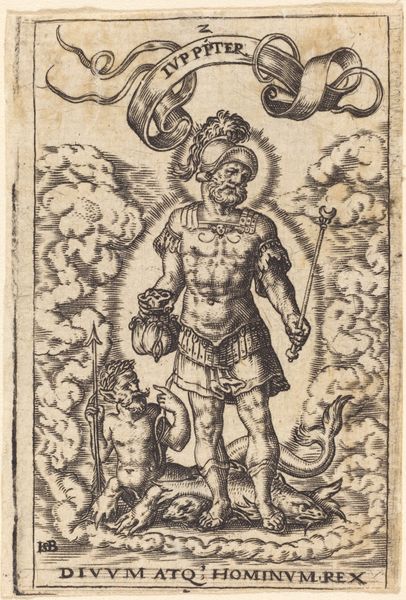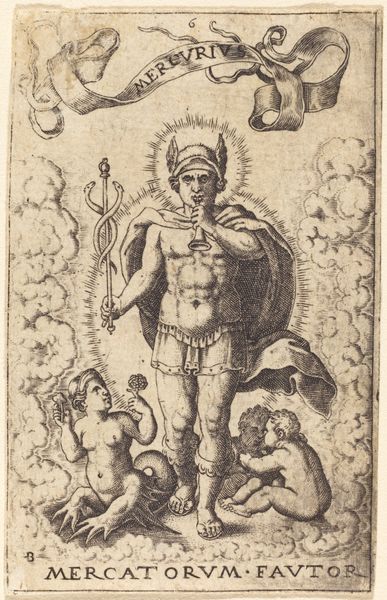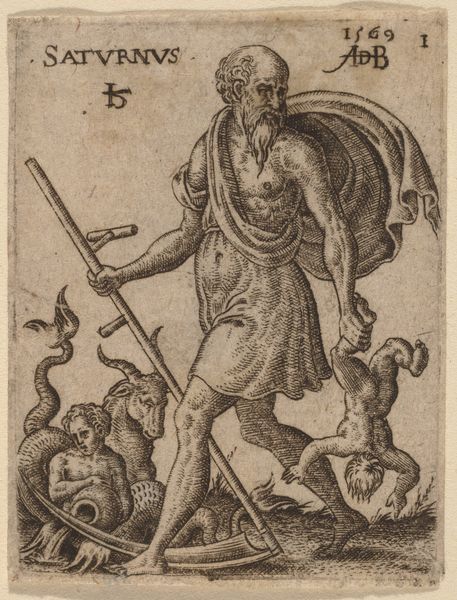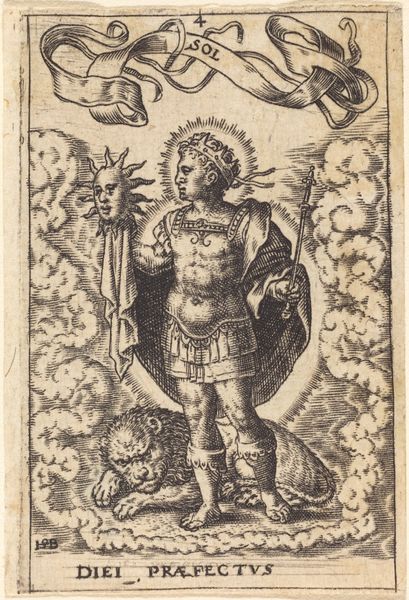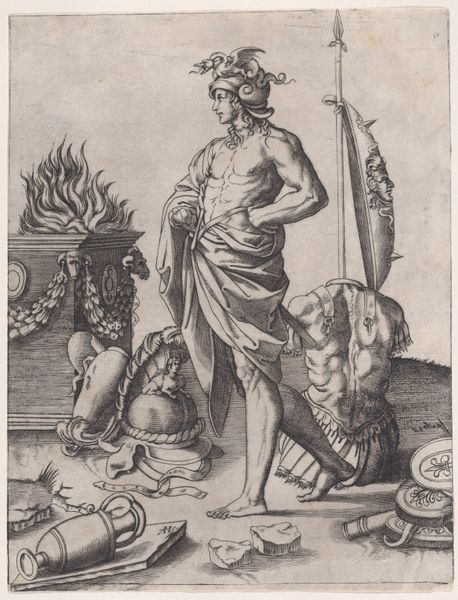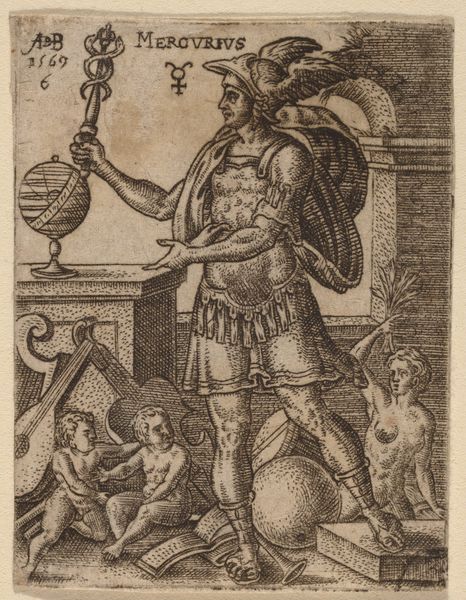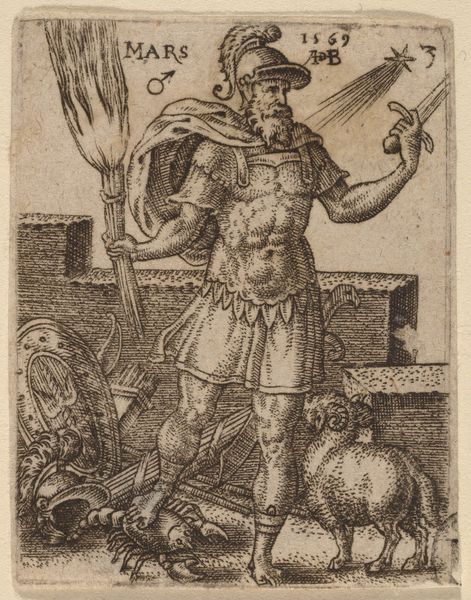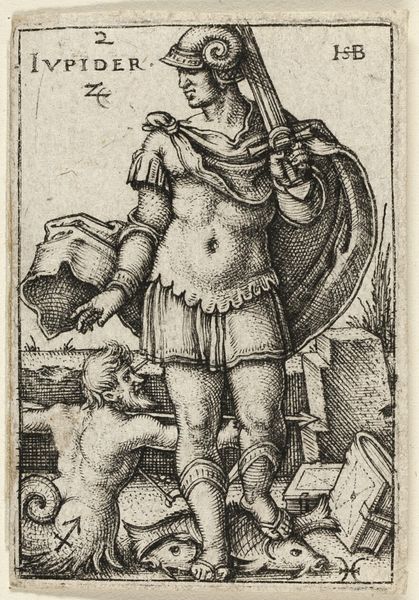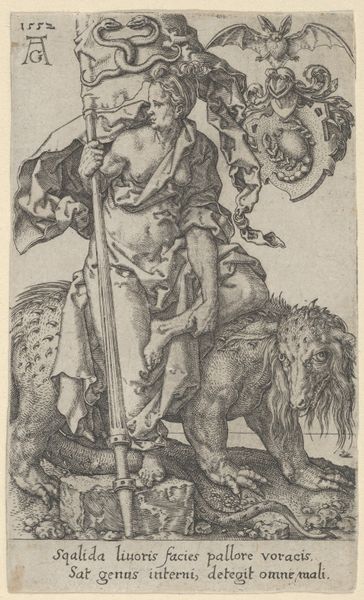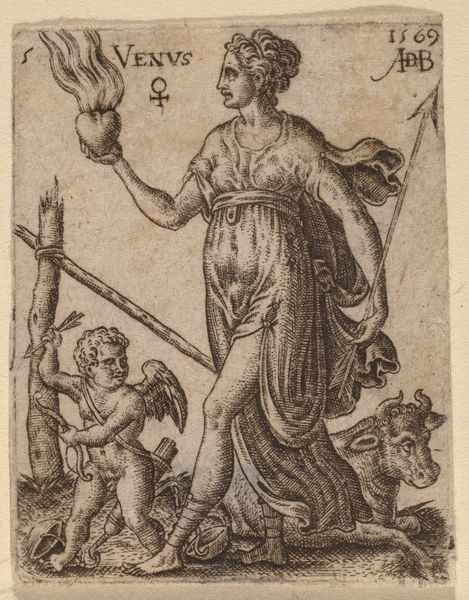
print, engraving
#
allegory
# print
#
mannerism
#
figuration
#
history-painting
#
engraving
Dimensions: sheet (trimmed to plate mark): 4.3 × 3.4 cm (1 11/16 × 1 5/16 in.)
Copyright: National Gallery of Art: CC0 1.0
Curator: This engraving by Abraham de Bruyn, titled "Jupiter," dates back to 1569 and offers an allegorical representation of the Roman god. Editor: It strikes me as rather rigid and unsettling; the crosshatching is quite intense. Look how heavily defined the muscles are. And there is almost a strange symmetry across the frame, that creates some internal tension. Curator: Mannerist prints such as this, frequently deployed complicated iconographies and stylized anatomical forms. Notice Jupiter’s authoritative stance, he's not merely a figure, but a symbol of power and perhaps divine order in the universe. De Bruyn uses him to express very human virtues, flaws and impulses too. Editor: Absolutely. It feels indicative of the political landscape, where strong leadership was, arguably, becoming both desired, and perhaps a source of fear, at the time. What do you make of the bound figure? That strange mythical hybrid seems to express subjugation? Curator: It may refer to astrological or elemental associations, such as the positioning of Jupiter being related to particular periods of chaos. Considering de Bruyn's broader oeuvre, "Jupiter" likely participates in a larger project of depicting celestial or cosmological phenomena through humanist eyes. Jupiter is surrounded by classical symbolism: there’s a pile of fish, some cornucopia. He’s wearing Roman garb and a helmet too. Editor: It's intriguing how de Bruyn merges classical mythology with contemporary societal anxieties through purely visual means. It almost lacks subtlety! The heaviness of the engraving itself is an interesting reflection on power. It communicates the god’s influence via sheer weight. Curator: Well put. What begins as a classical god figure is also then a time capsule containing details regarding socio-political undercurrents. Editor: Indeed, analyzing form and historical context reveals such distinct layers in an image like this. Curator: The printmaking enables circulation of not just an image, but ideologies across different social classes. Editor: So next time, let’s analyze these engravings together to appreciate not just aesthetics but how an image is used to perpetuate various ideas, cultural or political, into the masses.
Comments
No comments
Be the first to comment and join the conversation on the ultimate creative platform.
